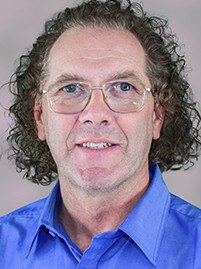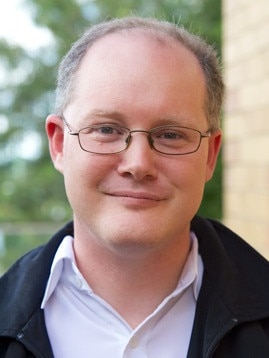Meet the wannabe politicians who just won’t give up
Between them these three candidates have lost 16 federal elections. And they’re on track to miss out again. Here’s why they keep running.
Leader
Don't miss out on the headlines from Leader . Followed categories will be added to My News.
This Saturday, more than a dozen candidates will ask for your vote with no expectation of a win.
They are the candidates who don‘t quit and run for their party election after election without any fear of the final result.
Greens candidate for McMahon (NSW), Astrid O’Neill, is Australia’s biggest loser, having lost every single election since 2004.
She is running again this year, on track to pick up her seventh loss in a row.
While Ms O’Neill is the perennial bridesmaid of Australian politics, she joins five other Greens candidates who have never won a seat but are contesting at least their fourth federal election since 2004.

Sixth time may be the charm for Citizen’s Electoral Council’s Chris Lahy, who secured a primary vote of just 0.44 per cent in Mallee, Victoria’s largest electorate, in 2019.
He has also run for state and local government, all to no avail.
Some might call him one of the “biggest losers” when it comes to election time but Mr Lahy said there was so much more to running in an election than winning the seat.
“For me it is about educating people; about changing their mindset to then change their behaviour, both at the voting booth and more generally,” he said.
“People need to realise that if they don’t change then nothing will change.”
Mr Lahy said he loved to sit down with people and help them understand that if they want things to be different, they need to take their vote seriously and get involved outside the election cycle.
“Because I have run so many times, I get to speak to the same people each election cycle and they tell me they haven’t changed their vote, but they are wanting change,” he said.
“It just doesn’t make sense.”
Mr Lahy became involved in politics because he was passionate about agriculture, having been a farmer.
As a parent of a child with a disability he also saw “so many holes in the healthcare system”.
The reasons he joined the first race in the first place have kept him coming back to contest the safe National seat.
“That is what drives me, wanting better,” he said
He is hopeful that one day Mallee voters will chose something different.
“There has been a shift in the atmosphere,” he said.
“(May 21) will be interesting, whatever happens.”

The 2022 election is also the sixth run for the Greens’ Neil Cotter who is taking on Opposition Treasurer Jim Chalmers in Rankin (QLD) – the federal seat which takes in population growth magnet, Logan, and is sandwiched between Brisbane and the Gold Coast.
Mr Cotter’s 2019 primary vote was the best of the Greens’ losing candidates at 9.08 per cent.
Parties are eligible for $10,656 from the Australian Electoral Commission plus as much as $2.91 per vote for every candidate that achieves a primary vote of 4 per cent or more.
The Greens are one of the better performers on this metric.
A spokesman for the Australian Greens said candidates themselves did not receive any part of that payment.
“The Australian Greens or our constituent member bodies cover all nomination fees for our candidates and recover those expenses through AEC funding,” he said.
In 2019, the Liberals picked up $27.57 million in electoral funding from the AEC – the most of any party – followed by $24.68 million for Labor, $8.06 million for the Greens and $3.94 million for the Nationals.
Political commentator and Griffith University associate professor Paul Williams said there were many reasons to continue running a losing candidate year after year – but very rarely was it about the AEC money, or personal prestige.
“All minor parties, especially larger minor parties such as The Greens and Pauline Hanson’s One Nation, will run as many candidates as they can in the lower house in a federal election because they need the presence on the ballot paper to bolster votes in the upper house,” he said.
“If the Greens were only running in the upper house and didn’t run lower house seats, it would give them a lower profile and make them not look like serious players and weaken their case.”
Mr Williams said the reasoning was a little different for micro-parties, which were often focused on a single issue – for example, No Aircraft Noise Party, The Seniors United Party of Australia or Informed Medical Options Party.
“They will run with no chance of winning in the upper or lower house because micro parties are often electoral vehicles for pressure groups,” he said.
So why not try a new candidate if one continues to run and lose?
Mr Williams said parties often had to take whoever they could get.
“If there is only one person (in an electorate) who wants to stick their hand up for One Nation each time, One Nation will happily endorse them,” he said.
“Even if they are only getting one or two per cent of the vote, who knows how many senate votes it will bring with it?
“Getting Pauline Hanson re-elected in the upper house is strategy one, two and three for One Nation.
“If you have a Greens candidate in western QLD who is going to lose but they are loyal, why would the Greens dump that person? It takes time to build up skills in a candidate – you have got to be able to talk to the press and door knock and be available.
“It’s not always easy to find candidates, especially outside the capital cities.
“Labor might send a university student out to Gregory or the Warrego to run against the LNP and it’s good experience for the candidate.
“Some people might say, why would they bother? But my question would be: Why are these people not congratulated for engaging with the democratic process? Hats off to people that take it upon themselves to put their hand up.”




